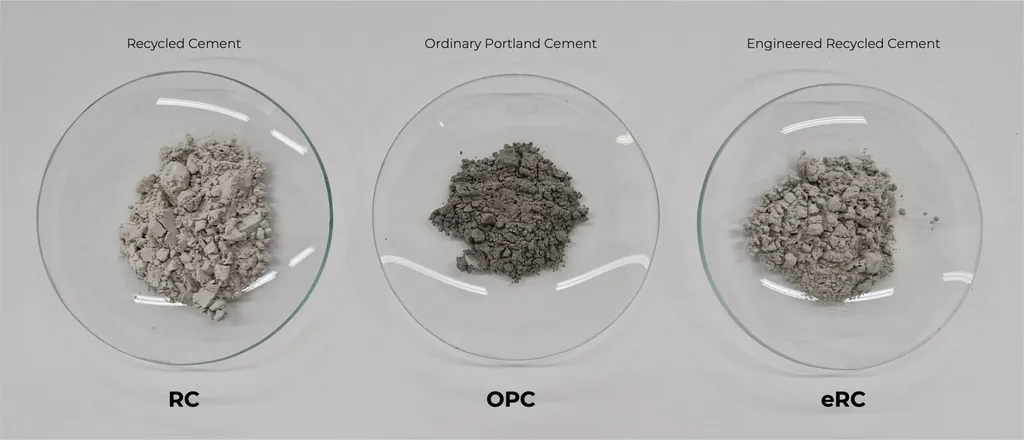In a significant stride towards sustainable construction, researchers have uncovered promising insights into the use of recycled concrete powder (RCP) in cement composites. The study, led by Damir Barbir from the Faculty of Chemistry and Technology at the University of Split in Croatia, explores how RCP can modify the heat of hydration, conductivity, and microstructural properties of cement, offering a dual functionality as both an inert filler and a nucleation agent.
The research, published in the journal *Buildings* (which translates to “Buildings” in English), reveals that incorporating RCP at replacement levels of 5–30% by weight can significantly alter the hydration behavior and microstructural development of Portland cement composites. “Our findings demonstrate a linear 16.5% reduction in the total heat of hydration at 30% RCP content,” Barbir explains. This reduction can be a game-changer for the energy sector, as it suggests potential energy savings in the production of cementitious materials.
The study employed a comprehensive array of characterization techniques, including isothermal calorimetry, electrical conductivity measurements, thermogravimetric analysis, FT-IR spectroscopy, and scanning electron microscopy. These methods provided a detailed understanding of how RCP influences the properties of cement composites. Notably, the research observed a 26.5% decrease in peak electrical conductivity and a delay in reaction kinetics, indicating that RCP can modify the hydration process in a way that could be beneficial for various applications.
One of the most intriguing findings was the increased stability of hydration products, with portlandite decomposition temperatures rising by up to 10.8 °C. This enhanced stability suggests that RCP can contribute to the durability and longevity of construction materials. Microstructural observations further confirmed the formation of denser but more amorphous C–S–H phases, alongside increased interfacial porosity at higher RCP contents.
The study identifies an optimal replacement range of 20–25% RCP, striking a balance between performance and sustainability. This range could serve as a practical guideline for the construction industry, enabling the development of more sustainable building composites while addressing circular economy objectives.
The implications of this research are far-reaching. By utilizing construction waste in the form of RCP, the construction sector can reduce its environmental footprint and move towards more sustainable practices. “This research provides quantitative evidence of RCP’s potential as a supplementary cementitious material,” Barbir notes. “It offers a practical solution for developing more sustainable building composites, aligning with the goals of the circular economy.”
As the construction industry continues to seek innovative ways to reduce waste and improve sustainability, the findings from this study offer a compelling case for the adoption of RCP in cement composites. The research not only advances the understanding of construction waste utilization but also provides a roadmap for future developments in the field. By embracing these insights, the industry can take a significant step towards a more sustainable and circular future.

